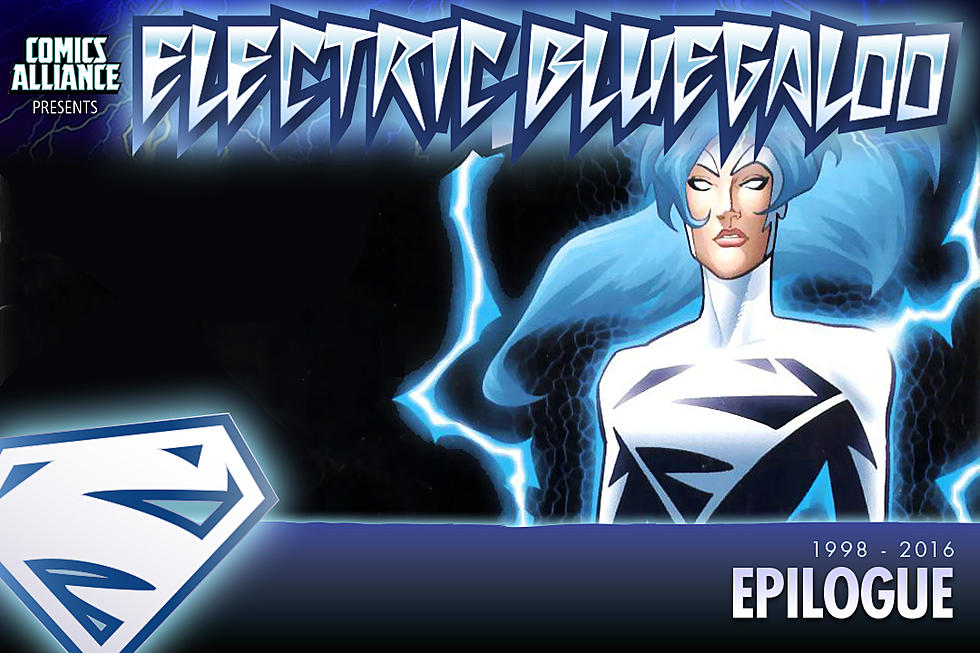![Moving Pictures by Kathryn and Stuart Immonen [Review]](http://townsquare.media/site/622/files/2010/06/moving-pictures.immonen.jpg?w=980&q=75)
Moving Pictures by Kathryn and Stuart Immonen [Review]

Kathryn and Stuart Immonen are the power couple of fun comics, with their separate work on Marvel books like "Nextwave" and the recent "Patsy Walker: Hellcat" miniseries exhaling breaths of anarchic and whimsical fresh air into the often overserious superhero world. It's a little surprising, then, that their latest collaboration, "Moving Pictures" (just out from Top Shelf), is a sparse, bleak experience that moves with slow, deliberate steps through a world of deep, ambiguous shadow.
"Moving Pictures" is set in WWII-occupied France, and follows Ila Gardner, a Canadian working as an art curator who becomes entangled in the competing efforts of the French and the Germans to catalogue and keep the great art treasures of the French museums from one another. The story unfolds over multiple timelines, and is doled out in oblique fragments, giving us a handful of glimpses into Ila's life and character, leaving it to the reader to piece together the incomplete puzzle into something approximating a conclusion.

Ila is a ballsy choice as a main character. She works at being unlikeable, wearing a cold and nihilist demeanor like a suit of impenetrable armor. What's more, the book hinges everything on Ila. There are only a handful of other "major" characters, and they are all defined in terms of their relationship to Ila -- her lookalike sister, who pines for home and family and everything Ila has rejected; German officer Rolf Hauptmann, her opposite number in the art game, in many ways her enemy but also the person she becomes closest to through an impossible to parse combination of choice and circumstance.
The overriding sensation of the work is one of creeping, suffocating emptiness. The art is relentless in its use of negative space, often shrouding faces or whole bodies in shadow, literally removing the humanity from scene after scene. Silent pages that reduce the book's setting to abstract shapes punctuate the work. Various French Nationals who Ila knows, each dealing in their own way with this calamitous moment in history, at first dot the landscape but slowly fade from view as the book strips away everything but Ila and her solitude. One reading of this book could have the entire plot hinge on a character who is never seen on panel or discussed by name, the central human being literally absent from the story.

The book builds to its climax through a series of images of empty, war-torn France. Early in the book there is an establishing shot of bustling streets, full of people. By the end of the book, we see those same streets, devoid of a single soul, clouds of smoke and steam and scraps of paper floating like the ghosts of the missing. At the beginning of the story, Ila gives her own passport to her sister and sends her home. By the time the reader is face to face with the final image of Ila, alone and transformed into something not resembling herself, we wonder if Ila didn't somehow send herself away with her sister, and if she isn't as haunted by absence as the streets outside her window.

More From ComicsAlliance

![Dan Slott And Stuart Immonen Bring Norman Osborn Back In ‘Amazing Spider-Man’ #25 [Preview]](http://townsquare.media/site/622/files/2017/02/ASM-Featured.png?w=980&q=75)





![Marvel’s Newest Hero Is One Man In Many Bodies In ‘Mosaic’ #1 [Preview]](http://townsquare.media/site/622/files/2016/09/Mosaic_1_Featured.jpg?w=980&q=75)

